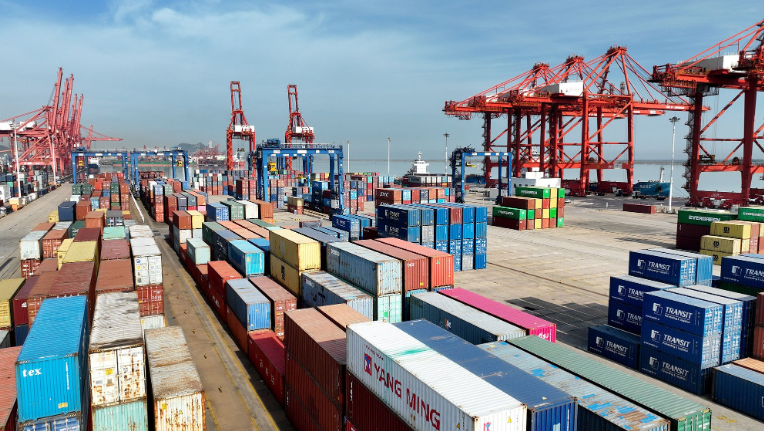A marked drop in Asian imports to Europe, made worse by a strong dollar, has heaped pain on container lines already struggling with massive over capacity, a major industry player said.
The container market has been hit by a slowdown in demand for goods from Asia, especially China, Jorn Hinge, president and chief executive of Kuwait-headquartered United Arab Shipping Company (UASC), said.
That has pushed competition into the South American market, but Brazil’s recession has hurt that region too.
The world’s number one and number three players Maersk Line and CMA CGM have both reported a slide in third quarter net profit.
UASC has seen a 5 percent drop in volume on its important Asia to Europe route in the year to date, versus the same period last year, which was “unheard of,” Hinge said.
“There is less cargo around these days,” Hinge said in an interview. “All shipping lines are hunting lower costs.”
“A lot more ships are being laid up these days. We have to go back to 2008 to see the amount of TEUs (20-foot container units) laid up that we are seeing now,” Hinge said, referring to vessels taken out of service.
Expectations for a first increase in U.S. interest rates in almost a decade next month pushed the dollar to an eight-month high earlier this week, putting fresh pressure on the euro. A strong U.S. currency increases costs for commodities and retail markets, also likely to hamper the container trade.
“The main problem in this (Asia to Europe) trade, I would guess right now, is the depreciation of the euro currency – many of the manufacturers in Asia, including China, have a pricing dollar economy,” Hinge said, adding that it was resulting in rising costs for retailers in Europe.
UASC, like other lines, has aimed to build market share in South America and last year entered into a cooperation arrangement with Germany’s Hamburg Sud on that route. But South America’s biggest economy, Brazil, is experiencing its worst recession in 25 years, adding to woes for container shipping.
“Unfortunately South America freight rates are not much better than Asia-Europe,” Hinge said.
“Brazil has its own problems right now particularly the economy and … recession. It has an impact on import volumes,” he said. “Everybody feels that.”
Hinge said liners were deploying more ships to South America looking for business, which had also hit trade in that market.
“(There are) too many ships – a cascading of ships – from the big East-West trades into many other trades,” he said. “It’s a snowball effect.”
Prospects for dry bulk shipping – which transports commodities such as iron ore and coal – have also deteriorated due to a vessel glut, world economy risks and slowing demand from top industrial goods importer China.
UASC was founded in 1976 by Kuwait, the United Arab Emirates, Saudi Arabia, Qatar, Bahrain and Iraq. In 2014, Qatar increased its stake to 51 percent to become UASC’s majority shareholder. According to consultancy Alphaliner, UASC’s market share, based on fleet capacity, is estimated at 2.5 percent versus nearly 15 percent for Maersk at the top.
Copyright Ships & Ports Ltd. Permission to use quotations from this article is granted subject to appropriate credit given to www.shipsandports.com.ng as the source.

